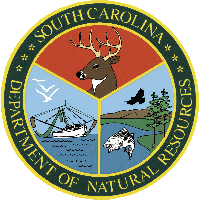CONTENTS
Introduction
The South Atlantic Bight
Methods
Octocoral Morphology
Glossary
Gorgonacean
Bauplan
see this for keys
Notes on the Species
Carijoa
riisei
Scleranthelia
rugosa
Telesto fruticulosa
Telesto nelleae
Telesto sanguinea
Bellonella rubistella
Pseudodrifa nigra
Nidalia occidentalis
Iciligorgia schrammi
Diodogorgia
nodulifera
Titanideum
frauenfeldii
Muricea pendula
Thesea nivea
Bebryce cinerea
Bebryce parastellata
Scleracis guadalupensis
Paramuricea sp.
Leptogorgia hebes
Leptogorgia punicea
Leptogorgia
cardinalis
Leptogorgia virgulata
Leptogorgia setacea
Leptogorgia euryale
Viminella
barbadensis
Renilla reniformis
Sclerobelemnon
theseus
Stylatula elegans
Virgularia presbytes
|
Guide
to the Shallow Water (0-200 m) Octocorals of the South Atlantic
Bight.
S. T. DeVictor & S. L. Morton, 2007 Methods Collections of fresh specimens were made by scallop trawl, hand collection using SCUBA, or by manned submersible. Live specimens were relaxed in 32 mg/l magnesium chloride to induce tissue expansion and photographed with a Nikon Coolpix, either through a dissecting microscope or with the camera’s macro setting. Most live specimens were preserved in 95% ethanol, but occasionally specimens were fixed in 10% buffered formalin and switched to 70% ethanol for long-term storage. Specimens were viewed under a dissecting microscope to examine gross morphology and the orientation of sclerites in the tissue. To examine sclerites individually, the coenenchyme was dissolved in household bleach (sodium hypchlorite), washed repeatedly with water, and prepared on a glass slide for viewing under a compound microscope fitted with an ocular micrometer. To prepare specimens for scanning electron microscopy, specimen tissue was selected from specific localities on the colonies (such as polyp, coenenchyme, medulla, etc). The tissue was dissolved in bleach and the liberated sclerites were washed in distilled water and 95% ethanol. Once dried, the sclerites were hand selected using a single-bristle brush or fine forceps and placed on adhesive mounted onto aluminum SEM stubs. Samples were coated with approximately 1.5 nm of gold-platinum using a Denton Vacuum Desk II Sputter Unit. Samples were examined using a JEOL 5600LV Scanning Electron Microscope at 20 kV. Once captured, images were selected based on their representative value and quality. |
 |